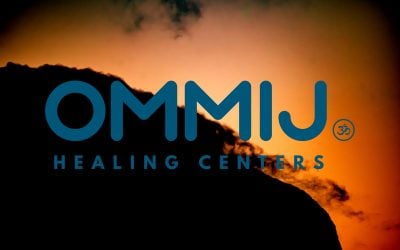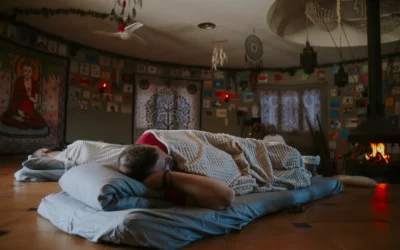What are Psilocybin Mushrooms?
Psilocybin mushrooms, often referred to as “magic mushrooms,” have been used for centuries for their psychoactive properties. Recently, they have garnered significant attention for their potential therapeutic benefits. This article explores the fascinating world of psilocybin mushrooms, delving into their history, science, uses, and the ongoing debates surrounding their legality and potential health benefits.
Where the Psilocybin Mushrooms are used?
These mushrooms have been used for thousands of years in various cultural and spiritual rituals. They are known for inducing altered states of consciousness, which can include visual and auditory hallucinations, as well as profound changes in perception, mood, and thought.
Historically, psilocybin mushrooms have been used by indigenous cultures in the Americas for religious and healing purposes. The use of these mushrooms was documented by early Spanish explorers, who observed their role in Aztec rituals. In modern times, they have gained popularity both as a recreational drug and as a subject of scientific research.
The Science Behind Psilocybin
Psilocybin, the active compound in these mushrooms, is converted in the body to psilocin, which affects the brain’s serotonin receptors. This interaction leads to changes in perception and cognition. Research suggests that psilocybin can help “reset” certain brain networks, which is why it is being studied for its potential to treat conditions like depression, anxiety, and PTSD.
Psilocin, which is produced when psilocybin is consumed, binds to serotonin receptors in the brain. This binding action is thought to be responsible for the hallucinogenic effects of the mushrooms. Studies have shown that psilocybin can increase connectivity between different regions of the brain, potentially offering therapeutic benefits for various mental health disorders.
Traditional and Modern Uses
Traditionally, psilocybin mushrooms have been used in religious ceremonies and healing rituals by indigenous cultures.
In modern times, the use of psilocybin mushrooms has expanded beyond spiritual and religious contexts. They are now used recreationally and are the subject of numerous scientific studies exploring their potential therapeutic benefits. The resurgence of interest in psychedelic therapy has led to a growing acceptance of these mushrooms as a legitimate tool for mental health treatment.
Legal Status Status of Psilocybin Mushroom
In many countries, they are classified as illegal substances, and their possession, use, and sale can result in severe penalties. However, some countries and regions have decriminalized their use or allowed them for medical and research purposes.
The debate over the legalization of psilocybin mushrooms is complex, involving ethical, medical, and societal considerations. Proponents argue that they have significant therapeutic potential and should be available for medical use. Opponents raise concerns about safety, potential for abuse, and the societal impact of legalizing a powerful psychoactive substance.
Types and Categories of Psilocybin Mushroom
Varieties of Psilocybin Mushrooms
Psilocybe Cubensis: The most common species of psilocybin mushrooms, known for their widespread availability and potency.
Psilocybe Semilanceata: Also called “liberty caps,” these mushrooms are typically found in grassy areas and are known for their strong psychoactive effects.
Psilocybe Mexicana: Native to Mexico, these mushrooms have a long history of traditional use among indigenous cultures.
How to Consume Psilocybin Mushrooms
Consuming psilocybin mushrooms requires careful consideration to ensure a safe and positive experience. Here are some common methods:
Raw Consumption
Eating psilocybin mushrooms or truffles raw is the most straightforward method. However, the taste can be unpleasant for some. Chewing thoroughly helps release the psychoactive compounds, facilitating quicker absorption.
Tea Preparation
Many prefer to make psilocybin tea, which can reduce nausea and improve the taste. To prepare, chop the mushrooms or truffles and steep them in hot water for 15-20 minutes. Adding ginger or honey can enhance the flavor and soothe the stomach.
Edibles
Incorporating psilocybin into food items like chocolates or smoothies is another popular method. This can mask the taste and provide a more enjoyable consumption experience.
Best Practices for Psilocybin Mushroom Use
To ensure a safe and meaningful experience with psilocybin mushrooms, consider the following best practices:
Set and Setting
Set refers to your mindset before the trip, while setting refers to the physical and social environment. Ensure you are in a positive mental state and choose a comfortable, safe location free from interruptions.
Start with a Low Dose
Especially for beginners, starting with a low dose is crucial. This lessens the possibility of having intense experiences and lets you determine how sensitive you are to psilocybin.
Have a Trip Sitter
A sober and trusted Guide can act as a trip sitter, providing reassurance and assistance if needed. Their presence can enhance safety and comfort during the experience.
Stay Hydrated and Nourished
Keep water and light snacks on hand. Staying hydrated and having some food can help mitigate nausea and maintain energy levels.
Psilocybin Mushroom Experiences
Experiences with psilocybin mushrooms can vary widely, influenced by dosage, individual psychology, and environmental factors. Common themes include heightened sensory perception, emotional release, and profound introspective insights. Many users report a sense of connection to nature and the universe, leading to lasting changes in perspective and personal growth.
Effects of Psilocybin Mushrooms
The effects of psilocybin mushrooms can be both physical and psychological. Users often report the following:
Physical Effects
- Nausea (especially with raw consumption)
- Altered perception of time
- Enhanced sensory experiences
- Euphoria
Psychological Effects
- Introspective insights
- Emotional release
- Mystical or spiritual experiences
- Enhanced creativity and problem-solving abilities
Psilocybin Mushroom Benefits
Research and anecdotal evidence suggest several potential benefits of psilocybin mushroom use:
Mental Health
Depression, anxiety, and PTSD are among the illnesses that psilocybin has showed promise in treating. Its ability to promote introspection and emotional release can facilitate healing and personal growth.
Creativity and Problem-Solving
Many users report enhanced creativity and improved problem-solving skills. Professionals in creative industries, such as authors and artists, may find this very helpful.
Spiritual Growth
For some, psilocybin mushrooms provide profound spiritual insights, fostering a deeper connection with themselves and the universe. These experiences can lead to lasting changes in worldview and personal values.
Preparing for a Psilocybin Mushroom Trip
Preparation is key to ensuring a positive experience with psilocybin mushrooms. Here are essential steps:
Research and Education
Understand what to expect from a psilocybin trip. Read reputable sources and consider speaking with experienced users.
Choose the Right Environment
Select a safe, comfortable setting where you feel secure.
Set Intentions
Having clear intentions can guide your experience. Whether you seek personal insights, emotional healing, or spiritual growth, setting intentions can provide focus and direction.
Psilocybin Mushroom Trip Guide
This trip guide offers a step-by-step approach to navigating a psilocybin mushroom experience.
Before the Trip
- Set Intentions: Reflect on why you want to use psilocybin and what you hope to achieve.
- Prepare Your Environment: Ensure your setting is comfortable, safe, and free from potential disturbances.
- Gather Supplies: Have water, snacks, and comforting items like blankets or music ready.
During the Trip
- Start with a Low Dose: Especially for beginners, starting with a low dose helps manage the intensity of the experience.
- Stay Hydrated:
- Embrace the Experience: Allow yourself to fully immerse in the experience. Trust the process and let go of any resistance.
After the Trip
- Reflect and Integrate: Take time to reflect on your experience. Journaling can help process and integrate insights.
- Share with Trusted Friends: Discussing your experience with trusted friends or a trip sitter can provide additional perspectives and support.
- Rest and Recover: Allow yourself time to rest and recover.
Psilocybin mushrooms offer a unique and potentially transformative experience. With the right preparation and mindset, exploring these substances can lead to profound personal growth and healing.
FAQ’s
How to find Certified Psilocybin Retreat?
OMMIJ is certified psilocybin Retreat program With 5* Ratings.
How Long Does Psilocybin Show Up in Urine?
Urine can contain psilocybin for up to 24 hours following use. However, its metabolite, psilocin, may be detectable for up to 1-3 days. Detection times can vary based on factors like dosage and individual metabolism.
Are Psilocybin Mushrooms Addictive?
Psilocybin mushrooms are not considered addictive. They generally do not cause physical dependence, and users do not typically experience withdrawal symptoms. However, psychological dependence is possible but rare.
How Long Does it Take For Psilocybin To Kick in?
Psilocybin typically takes about 20 to 40 minutes to kick in after ingestion. The onset time can vary based on factors like the form of consumption and individual metabolism. Effects generally peak around 1 to 2 hours after taking it.
How Long Does a Psilocybin Trip Last ?
A psilocybin trip typically lasts between 4 to 6 hours, although the duration can vary depending on factors such as dosage, individual metabolism, and the specific strain of mushrooms consumed.
Can You Cook Psilocybin Mushrooms?
Yes, psilocybin mushrooms can be cooked and incorporated into various dishes. However, it’s important to be cautious with cooking temperatures to avoid degrading the psychoactive compounds. Cooking methods like making tea or adding them to dishes like pizza or pasta are common ways to consume them.
Can You Freeze Psilocybin Mushrooms?
Yes, you can freeze psilocybin mushrooms to preserve them. Freezing can help maintain their potency and freshness for a longer period. Just ensure they are properly stored in an airtight container or freezer bag to prevent freezer burn.



